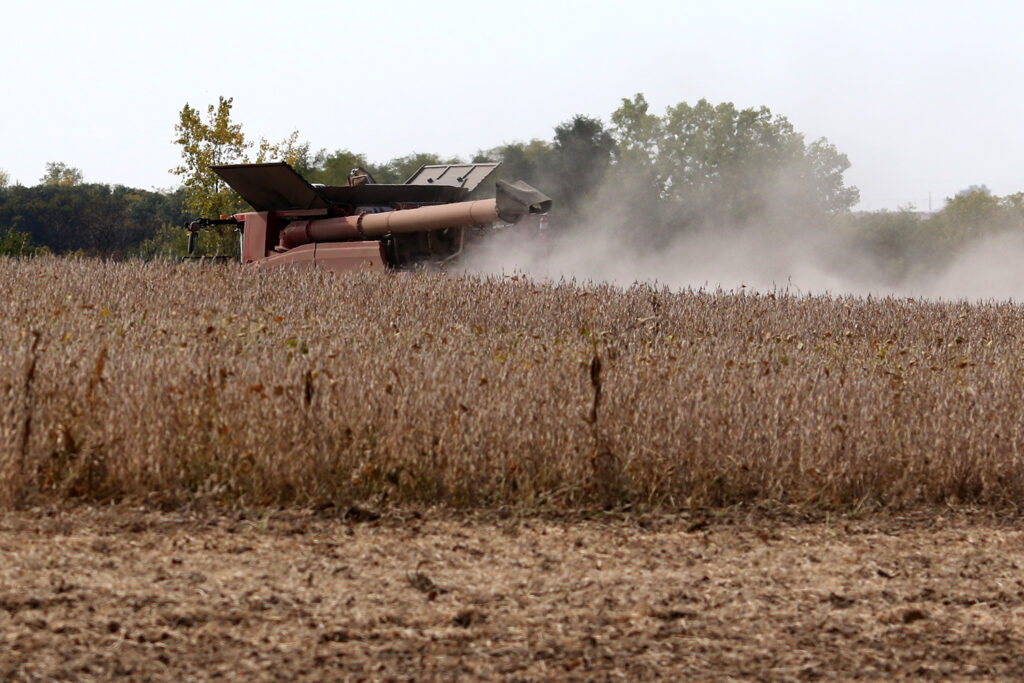
Jared Strong
Farmers in Iowa are routinely harvesting more than 200 bushels of corn per acre this year despite widespread drought as crop harvest reaches its conclusion, according to field agronomists for Iowa State University Extension and Outreach.
“Our corn hybrids are much better adapted to dry conditions now than they were 20 years ago,” said agronomist Angela Rieck-Hinz, who monitors part of north-central Iowa. “Most people were extremely fortunate that they caught a rain or two at the end of June and then they caught some more in August.”
About 77% of the state’s corn has been harvested for grain, according to a Monday report by the U.S. Department of Agriculture. About 93% of soybeans have been harvested.
That is eight days ahead of the five-year average. Crops matured more quickly this year amid the drought and hot temperatures in late August and early September.
The vast majority of the state is suffering from some measure of drought, and those conditions are expected to continue at least through January, according to the U.S. Drought Monitor. Nearly a quarter of the state has extreme drought — the second-to-worst dryness classification — in eastern Iowa.
Still, farmers are poised to post one of their best years for crop yields. The USDA predicted this month that corn yields would average about 199 bushels per acre. The actual figure won’t be finalized for months.
“Yields are really just ridiculously good,” said Meaghan Anderson, an agronomist who monitors central Iowa. “It’s not amazing across the board but, for the most part, people are super pleasantly surprised.”
She advises farmers to avoid tilling fields right now, unless necessary, to keep moisture in the soil. About 53% of the state’s topsoil has adequate or surplus soil moisture for growing crops, which is an increase from last week and nearly double what it was a year ago.
The state averaged about an inch of precipitation last week, according to State Climatologist Justin Glisan. That is more than double what is typically expected this time of year.
“Widespread rain fell across Iowa over several days last week and a cold blast brought the first measurable snow to northern Iowa,” said Mike Naig, the state’s secretary of agriculture. “The weather forecast looks drier over the next week with temperatures slowly climbing to near seasonal, offering farmers an excellent window to harvest or complete other field work.”
Despite the recent frigid temperatures, last week averaged about 7 degrees above normal.
Livestock pasture conditions slightly improved this past week, the USDA said. About 20% of pastures are rated good or excellent, “but getting water to pastured cattle continued to be an issue for some producers,” according to the USDA.
